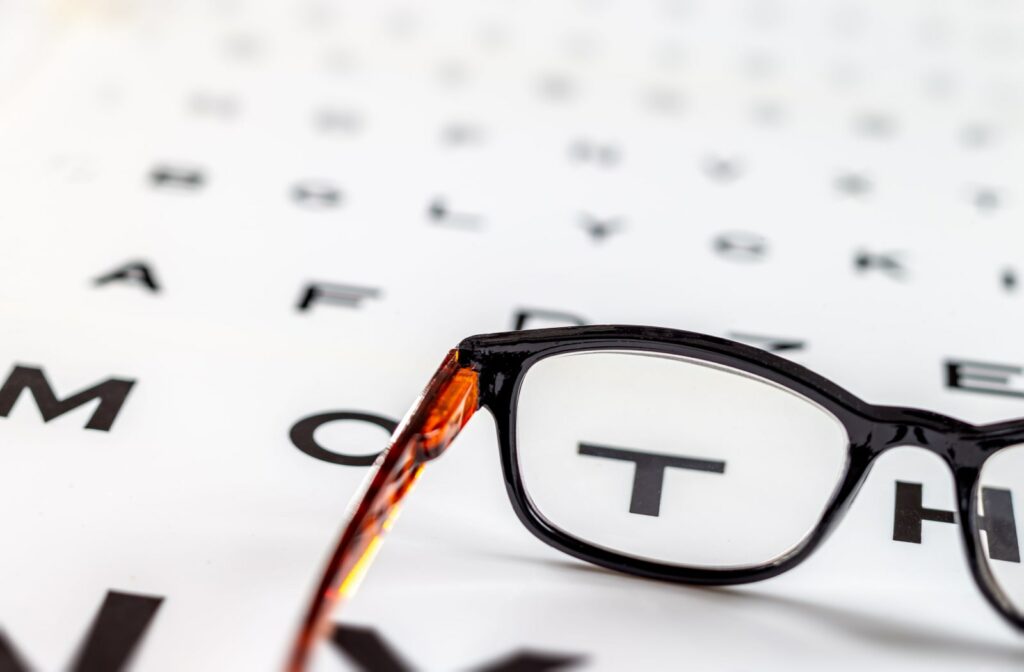Nearsightedness, or myopia, affects about 30% of Canadians, and that number is expected to grow. This common refractive error typically begins in childhood, and during their annual eye exam, your child’s optometrist will perform simple tests to detect myopia.
But if your child comes home from school complaining about trouble seeing the board during class, struggling to play sports they enjoy, or you notice them squinting at the television or computer, you should bring them in for an eye exam where we can discuss myopia control, even if they aren’t due for an eye exam.
Myopia control aims to slow the progression of nearsightedness using noninvasive techniques, like specialty lenses or atropine eye drops. Slowing myopia’s development can save your child from needing a strong prescription as they age and help prevent risks of high myopia, including retinal detachment, glaucoma, or cataracts.
Causes of Myopia
The retina at the back of your eye is a sensory element that relays light information to the brain, allowing your brain to process what you see. In a perfect eye, light passes through the cornea and lens and focuses directly on the retina, transmitting a crisp picture of the objects you see.
If you find it difficult to see distant objects clearly but have sharp vision up close, it may indicate the light entering your eye is not focusing directly on the retina, distorting your vision. This can happen when the cornea, the clear dome of your eye, is overly curved or the eye is too long, causing the light to fall in front of the retina.
Myopia is believed to be caused by:
- Genetics and family history
- Increased close-up tasks
- Growing reliance on digital screens
- Less time spent outdoors
Common Symptoms
Symptoms of nearsightedness can include:
- Blurry distance vision
- Headaches
- Eye strain
Young children may not be able to express trouble with their eyes, but parents can rely on behavioural cues that can indicate vision problems, such as:
- Frequent squinting
- Excessive blinking
- Eye rubbing
- Sitting close to the television or leaning into computer screens
- Lack of awareness of distant objects
If your child shows any of these behaviours, complains of eye problems, or your child’s teacher shows concern about their vision, a children’s eye exam can help get to the bottom of their symptoms.
Myopia Control
There are various methods available to control myopia that can be tailored to your child’s needs and lifestyle. These methods are designed to be easily followed by your child.

MiSight Contact Lenses
MiSight contact lenses offer a convenient solution for kids who don’t like glasses. These daily disposable lenses are specifically designed for children and can be inserted in the morning and discarded at the end of the day. With daily disposables, there’s no need to worry about sterilization and storage.
These contacts are a low-maintenance method to correct existing myopia while slowing its progression.
MiYOSMART Eyeglass Lenses
MiYOSMART lenses use advanced technology to correct and slow myopia. They feature a small clear zone in the centre of the lens and a surrounding honeycomb-shaped area of defocus in the outer zone. This outer zone has a weaker prescription, allowing your child to see through both a focused and unfocused lens, regardless of their viewing distance. A clinical study found that MiYOSMART lens technology can reduce myopia progression by nearly 60%.
These lenses are durable enough for active kids, are scratch-resistant and impact-resistant, fit any frame, and can protect your child’s eyes from UV rays.
Atropine Eye Drops
Adding low doses of atropine eye drops to your child’s glasses or contact lens routine is a simple approach to slowing myopia progression. While it’s not entirely known how atropine drops work for myopia control, researchers believe it binds to certain growth receptors in the eye, preventing the eye from growing too long.
This noninvasive treatment has shown promising results in reducing the likelihood of myopia progression for patients between the ages of 5 and 18.
Manage Your Child’s Vision
These control methods don’t cure myopia but can slow its progression. Controlling your child’s myopia before it progresses is key to helping them enter adulthood with lower nearsightedness. Annual eye exams allow us to monitor their eye growth and track myopia control results.
Your young children may not recognize changes in their own vision. If you notice behaviour that may indicate vision problems, schedule a children’s eye exam with Total Focus Optometry Centre.



